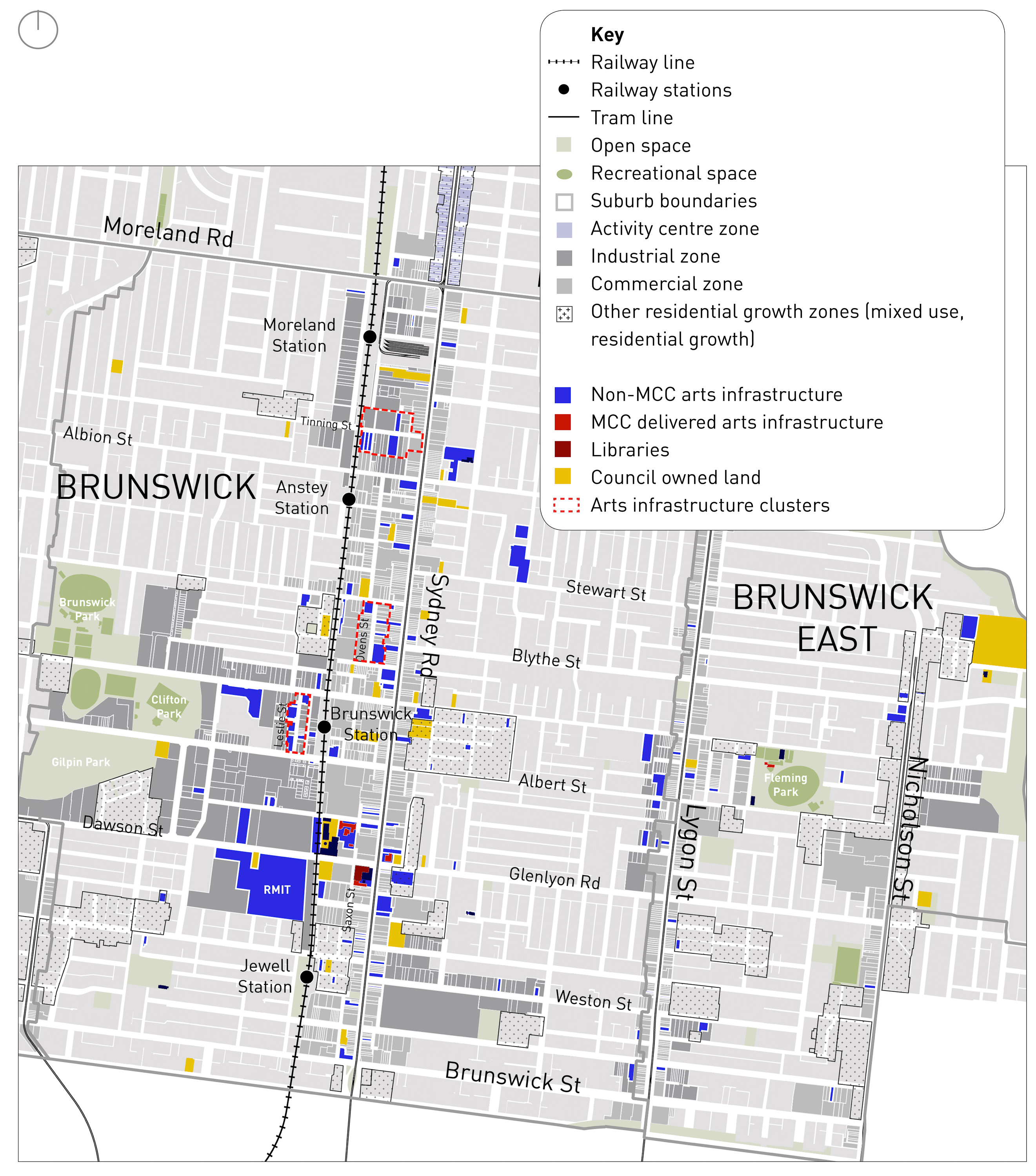Moreland is home to a robust, diverse and vibrant arts community. Neighbourhoods such as Brunswick and Brunswick East in particular have an established and celebrated creative atmosphere that contributes to a strong community identity, community cohesion and well-being. Creative industries thrive in areas where affordable spaces that are suitable for arts practitioners exist. Increased development pressure in inner city suburbs has begun to threaten the long-term viability of many creative spaces in Moreland.

In 2017, the City of Moreland published their Arts and Culture Strategy - Creative Capital, which asserts their commitment to building a resilient arts sector in Moreland. As part of this Strategy, the Council proposed the development of an Arts Hub(s), recognising the need for more accessible and affordable spaces for creative industries in Moreland.
Our approach focused on assessing the needs of the local creative community and the current supply of creative spaces within Moreland. The methodology included mapping all creative spaces in Moreland (over 200 spaces), consulting with local artists across a range of practices (including visual artists, performing artists and musicians), assessing existing council-owned assets and analysing case studies of contemporary arts hubs and precincts. The recommendations included the re-purposing of Council buildings, the retention of industrial zoning in specific locations to support creative industry, the establishment of a new digital arts platform, a tailored leadership program to build capacity in the arts sector and the employment of a dedicated arts infrastructure officer to drive the implementation of the plan.

The Moreland Arts Infrastructure Plan applied an evidence-based method to interrogate the best approach to supporting creative industries in Moreland. In response to the findings, the plan recommends a suite of practical initiatives to protect and encourage the flourishing of creativity in Moreland.
The Moreland Arts Infrastructure Plan was endorsed by the City of Moreland in March 2018. Implementation of the plan commenced immediately with four of the eight key recommendations actioned within six months of endorsement.
Oakover Village Housing Diversity Report
Oakover Village is an identified urban renewal precinct in the northern suburbs of Melbourne. Delivering housing diversity is a key objective within the precinct. This includes the need to deliver affordable housing, adaptable housing and a mix of housing that meets the needs of residents. Fifty percent of the land within the precinct is publicly owned and part of the state government’s Public Housing Renewal Program (PHRP). The program includes a blanket target across all sites to increase affordable housing by ten percent of the existing dwelling numbers. Most of the public housing in Oakover Village has been demolished. Unlike many of the other PHRP sites, the public housing in Oakover was single-storey detached or semi-detached housing. The scale of new development will be in the order of six to eight-storey apartment buildings.

Hodyl & Co was been engaged to provide guidance on appropriate mechanisms to deliver housing diversity within Oakover Village that will support the establishment of an inclusive and diverse community. This includes guidance on policy, governance structure and building design.
The current housing affordability crisis in Melbourne is impacting the most vulnerable members of our communities. The PHRP is a highly contested policy, surrounded by robust discussions over the introduction of private development partners and the appropriate quantum of affordable housing that should be delivered on public land.

The recommendations from this report provide guidance on both private and publicly owned land and encourages a more progressive, open-minded understanding of housing need over the life course. Our work cuts through complicated ideological debate, to provide evidence to support critically needed practical solutions to one of the biggest moral challenges in our community.
Related Projects
Central Melbourne Built Form Review